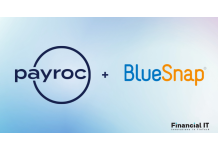Nexi Ecommerce Report Reveals Europe’s Payment...
- 04.08.2025 01:35 pm
Metadomo And FTS.Money Announce Strategic MOU To...
- 04.08.2025 01:15 pm
Treasury And Payments Platform Finmo Enhances...
- 04.08.2025 11:35 am
Banking Circle Completes Acquisition Of Australian...
- 04.08.2025 11:25 am
PingPong Payments Enhances Global Capabilities Through...
- 04.08.2025 09:05 am
Boost Payment Solutions And FIS Partner To Automate...
- 01.08.2025 09:15 am
Navan Joins American Express Sync™
- 31.07.2025 02:05 pm
McDonald’s Franchisee, Ice Age Management, Implements...
- 31.07.2025 02:05 pm
Payroc Signs Definitive Agreement to Acquire BlueSnap
- 31.07.2025 11:54 am
TeamSystem Chooses Checkout.com To Power Next‑Gen...
- 31.07.2025 09:55 am
Visa Brings Google Pay Integration To Fleet Cards,...
- 31.07.2025 08:55 am
MiFinity Expands Local Payment Options With PayU...
- 30.07.2025 03:35 pm






















